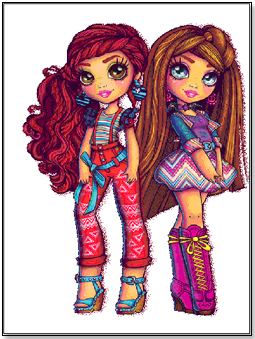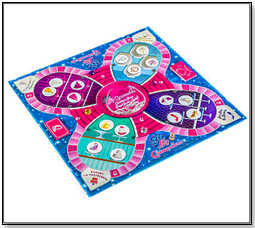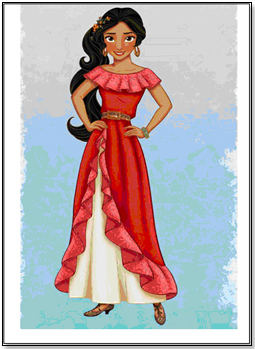
April 23, 2024

August 2015 | Vol. XIV - No. 8
Hispanic consumers – a neglected major factor in the toy space
Ignoring these consumers could spell toy trouble
When you walk down the toy aisles of any major retailers you will get the impression that North America's population is totally white. Yes, there is the occasional, very occasional, brown doll or the toy box that features kids other than lily-white ones but basically these are just token nods to the fact that perhaps not everybody is of English or German stock.
Truth is, of course, that the United States is a rainbow-coloured nation and this statement is particularly appropriate if you consider the Hispanic population.
According to the United States Census estimates for 2014, the total U.S. population numbers about 319 million. Of these, 17.1% are of self-declared Hispanic descent. If you add in the estimated 9 million undocumented Hispanic immigrants, presumably outside the purview of the census takers, you get to a total of 63 million or about 20% of the total. Looking further out, the Hispanic population is expected to reach about 106 million in 2050 out of a projected total of 400 million – more than a quarter of the U.S. population.
Hispanics are not only a population factor, they also are a very potent force economically. They represented one trillion dollars in buying power in 2010 and this is expected to rise to $1.5 trillion this year, which means an increase of 50% in just five years. They are also thought to buy toys at a rate of about four to five billion Dollars this year.
That is why it is so surprising that the major toy manufacturers have paid so little attention to this consumer group. Out of the tens of thousands of toys sold by ToysRUs, only twenty-three are devoted to the Hispanic child and most of these are focused on the two-to–four years age group. Of these twenty-three toys, only four are from Mattel and the same from Hasbro. There are four fashion dolls and one game – Scrabble from Hasbro. In short, the word "afterthought" leaps to mind. In the specific case of Mattel, their appeal to the Hispanic market has traditionally been to include the token Latina doll into a given year's Barbie range. Out of today's 151 Barbie Fashion Dolls there are two Hispanic versions – the 2015 Birthday Wishes Barbie and Barbie Entrepreneur.
In fact, Mattel made a major effort in 2013 to court the Hispanic mothers. The company thought of a way to boost sales during the most-important fourth quarter by connecting with the Hispanic mothers, those that buy all the toys, by launching an advertising campaign called "Toy Feliz". In Mattel's own words, the thinking was that by reaching out "more directly, more deliberately and more authentically to Latina moms, we could really elevate the business and drive growth." Unfortunately, it did not work out quite the way the company had hoped. Its U.S. business dropped in that same fourth quarter like a rock – nearly 14%. What this tells you is that you cannot approach the Hispanic community, or at that any other, as a short term expedient. You have to work at it, develop it, and then execute over the longer term. In other words, you take a commitment.
One of the reasons why the leading manufacturers are somewhat hesitant in diving fully into the Hispanic market is that the purchase motivation in this group is different from the Caucasian one. I carried out a number of research projects focused on this subject and what struck me was that communal play and reassurance were the two main factors in the view of the Hispanic children. Specifically, out of twelve questions, the top four chosen were:
· The toy lets me do lots of other things than what is on the box
· My parents like the toy or the people who made it
· The toy lets me play with my friends
· The toy lets me play with my parents
In comparison, Caucasian children had a very different focus. Their top four responses were:
· None of my friends have it – it is new.
· I can play with the toy all by myself
· I saw the character in a movie or on TV
· I like the box and the many things in it
This difference in focus has a number of implications. For one, movies or TV films have an overriding influence on Caucasian children but much less so for Hispanic chicldren. Also, the Caucasians see the toy as it relates to him or herself only whereas the Hispanic kids see its importance in how it performs in a group setting and this has implications on product attributes and package design.
However, while the overall toy space devoted to Hispanic children is still sparse, three companies are trying to change this.
One of them is MGA Entertainment of Bratz and Lalaloopsy fame. They launched their Vi and Va range a couple of months ago and now have thirteen SKUs at Target and seven linear feet shelf space. Given their very short time of the market, the Vi and Va range is moving well.
It is interesting to read MGA's description of the two core dolls –Viviana and Valentina – hence Vi and VA:
"Two sisters and best friends with their cousins Felicia and Roxxi. Every day is an adventure and a reason to celebrate the bond of family and friendship."

You can see how this story line fits in with my research findings on the leading motivational factors governing the Hispanic child.
The other company is the Cass Group. The guiding light there is Phil Jackson who has been active in the toy industry over the past thirty years and in his earlier professional life served as Group Executive Global Games at Hasbro and before that as Vice President of Marketing Games at Mattel. After leaving Hasbro in 2011 he did some consulting in and out of the Game and Toy Industry and one of his assignments was to represent an inventor's concept focusing on Hispanic girls. After pounding the pavement for a year and meeting with several established game companies, he realized that there was a considerable lack of understanding in the toy industry of the Hispanic market and how to access it. He and three other former Hasbro executives decided to form the Cass Group as the vehicle with which to translate the product concept – board games for Hispanic girls – into a successful reality.
In this, his and his colleagues were guided by a number of insights:
· There has always been an awareness of the growing Hispanic market. In fact, many companies have announced "Hispanic Initiatives" and proclaimed that they were going to make a difference in serving this market. These initiatives mostly consisted in advertising existing products on Univision or Telemundo and including Spanish language on packaging but there was no product specifically developed for the Hispanic child.
· Phil and his colleagues started the project on the premise that there was indeed an opportunity to develop product based on cultural events and traditions within the Hispanic community. They found this community to be very family oriented and to love their heritage.
· They identified one of the most important events in the life of an Hispanic girl; Quinceanera. Quinceanera is the celebration of a girl's 15th birthday. It is a huge event and families pull out all the stops to make it special and for the girl to truly be a princess for the day. It is like a Sweet Sixteen on steroids. They spend thousands of dollars on gowns, tiaras, shoes, cakes, music and decorations for the event. The girl of honor starts the day in ballet slippers and then, after a church service, is presented with a pair of high heels to signify her transition into adulthood. The party includes food, toasts, traditional dances as well as a custom choreographed dance routine performed by the girl and her "court". There is also a very special guest called the Godmother. The girls choose an adult who is a mentor or favourite aunt or teacher to serve as her Godmother. Young girls start dreaming about their Quinceanera as young as seven and the planning can take years as well.
· Phil and his colleagues decided to develop two games focused on the event - My Quinceanera Countdown Game and My Quinceanera Angry Old Godmother Game. The objective of the former is to travel around town and collect your gown, cake, jewellery and shoes and be the first back to the centre. The latter is about the Angry Old Godmother in a game a lot like Old Maid. The object of the game is to collect pairs of shoes, necklaces, gowns and cakes and get rid of all of your cards.
· The games were released late last year and the Countdown game was taken up by ToysRUs and Amazon. Sell-through so far is looking good. One consumer review said that "we bought the game for my daughter's quinceanera next week, but the kids could not wait that long to play it. Amazingly this game caused them to put down their iPads for a while. Highly recommended."

The Cass Group is not the only company beginning to see the potential for Hispanic-oriented toys. Disney is another – they are now testing the waters by making Elena of Avalor a major part of next year's "Sofia the First" animation movie. This is Disney's first Latina fashion doll entry and the buyers understand that there will later be a follow-up movie fully devoted to Elena herself.
Elena of Avalor and its successor movies could not only be an important factor in the U.S. Fashion Doll market place but are expected to also be successful in the Hispanic markets elsewhere – Spain, Portugal and Latin America.
In the final analysis, the Hispanic mothers and children are like any other consumer group. They are an entity of their own. To be successful with this group, you have to embrace it and you have to take a commitment. Whether any of the companies quoted in this article will do so over the longer term remains to be seen. However, one thing is pretty clear. If they do not, they will not succeed just like all their predecessors who took a half-hearted stab at it. If they do, they will in the end do well.
Copyright © 2024 TDmonthly®, a division of TOYDIRECTORY.com®,
Inc.





